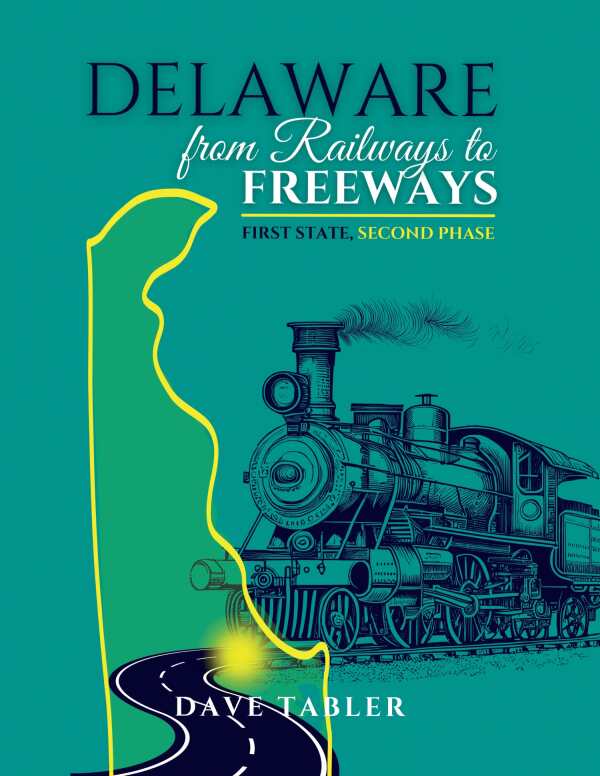Delaware from Railways to Freeways
First State, Second Phase
Delaware from Railways to Freeways is a beautiful regional reference text that covers the landscapes and artifacts that first defined Delaware as a state.
Dave Tabler’s Delaware from Railways to Freeways is a fascinating history text covering important sites and artifacts from the first state.
The book includes a wealth of historical and social insights into the production techniques and ultimate significance behind the early Delaware artifacts and events it covers. It makes note of the geographical importance of certain buildings and landscapes as well. Detailed images appear on each page of the book alongside brief, evocative descriptions of their meaning and significance. The result is an involving pictorial history of the evolution of Delaware, complemented by distinguishing coverage of the development of the state’s transportation infrastructure.
The book does an intriguing job of connecting seemingly unrelated historical threads. It finds significance and beauty in otherwise unremarkable sights, as of moss on a cypress roof. An ancient fallen tree is revealed to have been a hiding place for a runaway slave, too. It argues that the once prevalent railways and subsequent freeways shaped Delaware’s social fabric and trade. Religion, commerce, the arts, agriculture, family life, and medicine in the state are also represented, demonstrating how objects and landscapes carry with them echoes of all kinds of history.
The book becomes more esoteric in covering Delaware technologies, as with the Manby mortar, a life-saving device making use of the principles of artillery. Objects like communion tokens that were used to signify worthiness in Calvinist churches act as material evidence of networks of shared beliefs and customs. Elsewhere, destructive yet evocative messages from the past, as with graffiti, are photographed and contextualized. Nor does the book forget obscure Delaware personalities: it memorialized people including W. F. Quinby, an early aviation proponent whose experiments didn’t quite pan out but whose failures were important in the eventual triumph of the Wright brothers, and it discusses Annie Jump Cannon, an early astronomer and pioneering woman of science.
With detailed notes that expand its material with names, dates, and in-depth analysis, the appendix complements this thorough Delaware text. However, there’s no state map included to place the pictured sites into their overarching geographical context, and this peculiar absence is felt. Still, Delaware from Railways to Freeways is a beautiful regional reference text that covers the landscapes and artifacts that defined Delaware in the nineteenth and twentieth centuries.
Reviewed by
Matt Benzing
Disclosure: This article is not an endorsement, but a review. The publisher of this book provided free copies of the book and paid a small fee to have their book reviewed by a professional reviewer. Foreword Reviews and Clarion Reviews make no guarantee that the publisher will receive a positive review. Foreword Magazine, Inc. is disclosing this in accordance with the Federal Trade Commission’s 16 CFR, Part 255.

